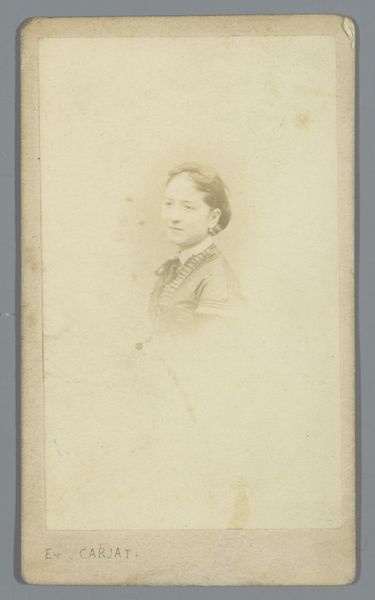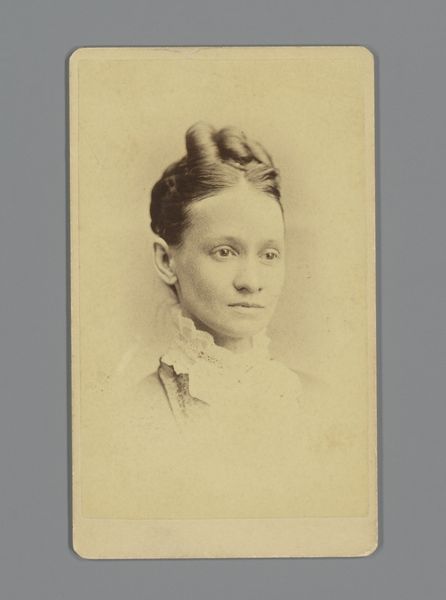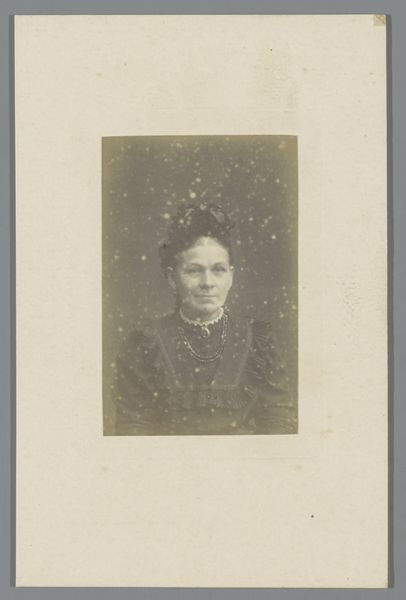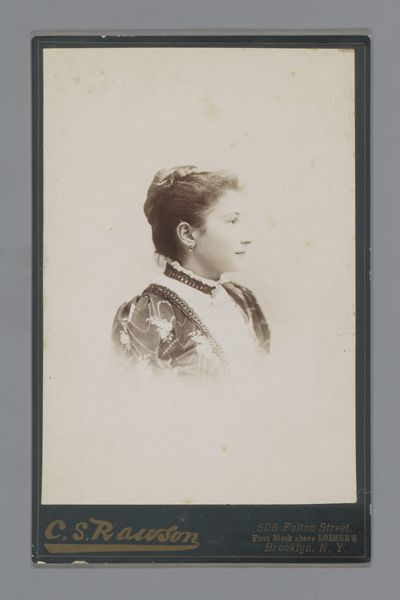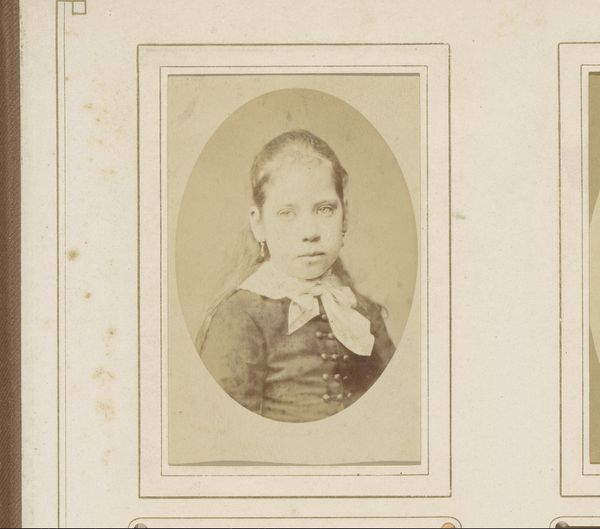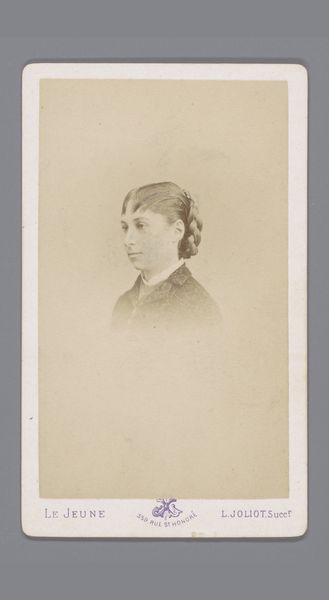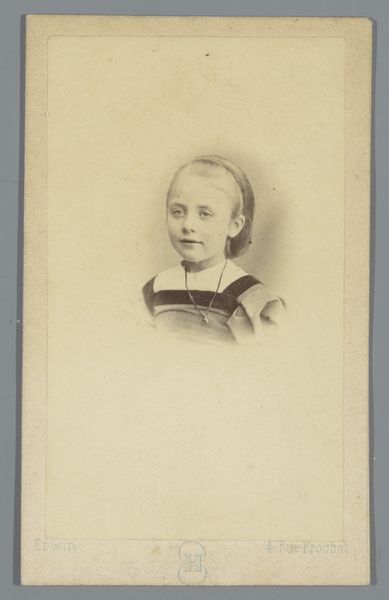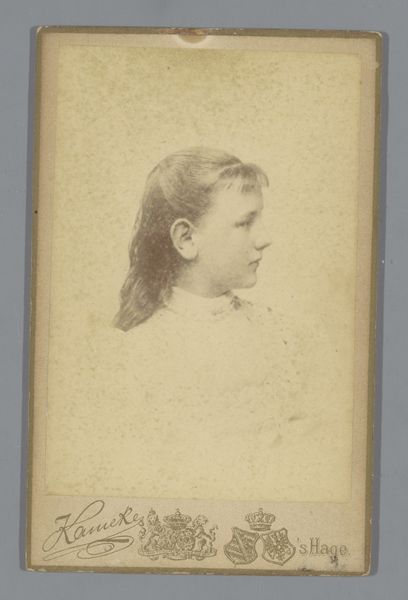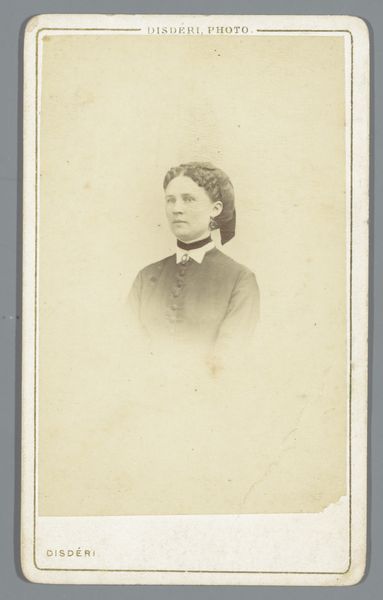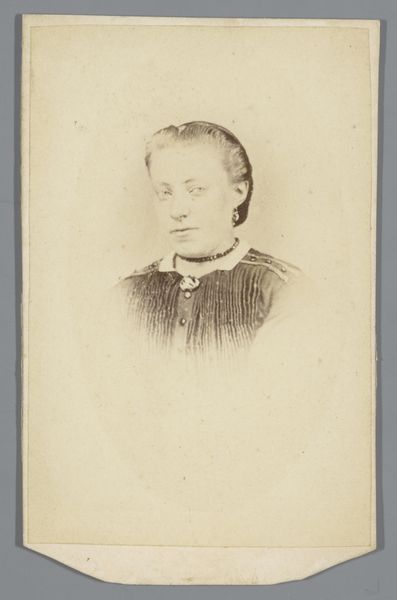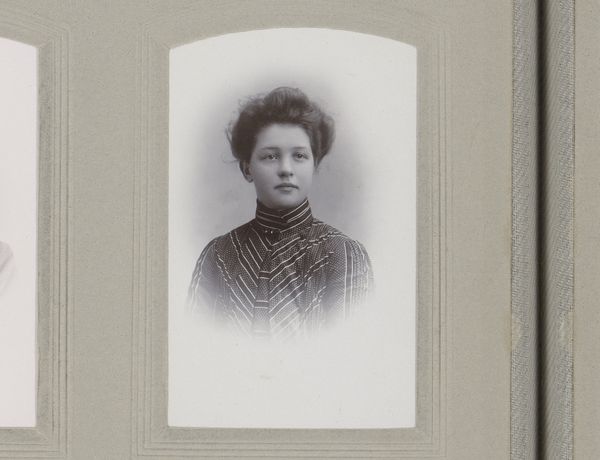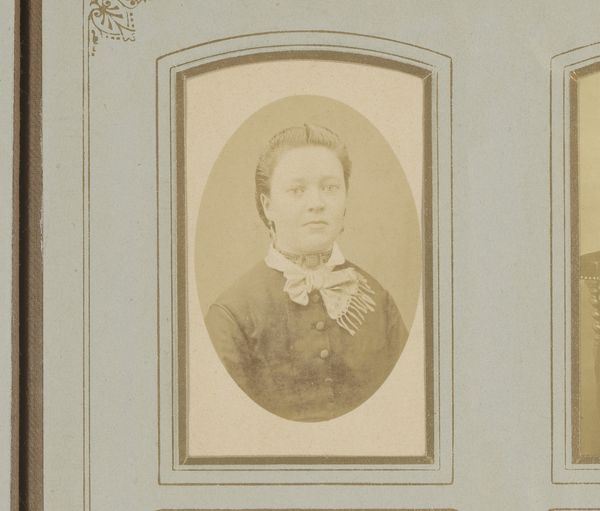
photography
#
portrait
#
photography
Dimensions: height 105 mm, width 63 mm
Copyright: Rijks Museum: Open Domain
Curator: Before us we have "Portret van een onbekende jonge vrouw," or Portrait of an Unknown Young Woman, a photographic piece created by Albert Alfred Warnery, sometime between 1873 and 1885. Editor: The delicacy is immediately apparent. There’s such a faded ethereal quality, almost as if we're peering into a memory. The soft sepia tones amplify that. Curator: Precisely. These "carte de visite" portraits were very popular during that era. It’s fascinating to consider their social function. Who was this young woman? Was this for family, for courtship? Editor: It makes you wonder about the identity of this individual. The very lack of specific details can be very interesting, focusing one's mind on considering universal questions surrounding identity. Her clothing—a frilly collar—perhaps situates her within a particular social strata? And her slightly somber expression. Was that merely an aspect of photography back then or is there something more profound at play here? Curator: A good point, regarding clothing and photography’s function. Such items acted as visible signifiers of middle class identity. Also, remember that photographic exposures were much longer in the late 19th Century; this forced stillness often lent to formal, serious demeanor. This piece could easily have been a token intended for sentimental reasons during an age defined by constraints and conventions. Editor: The portrait sits within broader historical questions, but also resonates profoundly with themes that persist today such as agency and representation. Do you think the photograph romanticises her condition, reflecting idealized images of womanhood back then, or is that just the historical situation? Curator: The photograph probably does reinforce societal expectations. Photography back then tended to present women inside of these rather constrained ideological norms. Perhaps examining who does and doesn't get represented is where this photographic portrait yields an interesting understanding of late nineteenth-century gender relations. Editor: I like that approach, and this conversation itself just reminds us that images always reflect the complex intersections of identity, history, and interpretation. Curator: Absolutely; it demonstrates the complex interplay of art, society, and the ongoing reevaluation of the past.
Comments
No comments
Be the first to comment and join the conversation on the ultimate creative platform.
